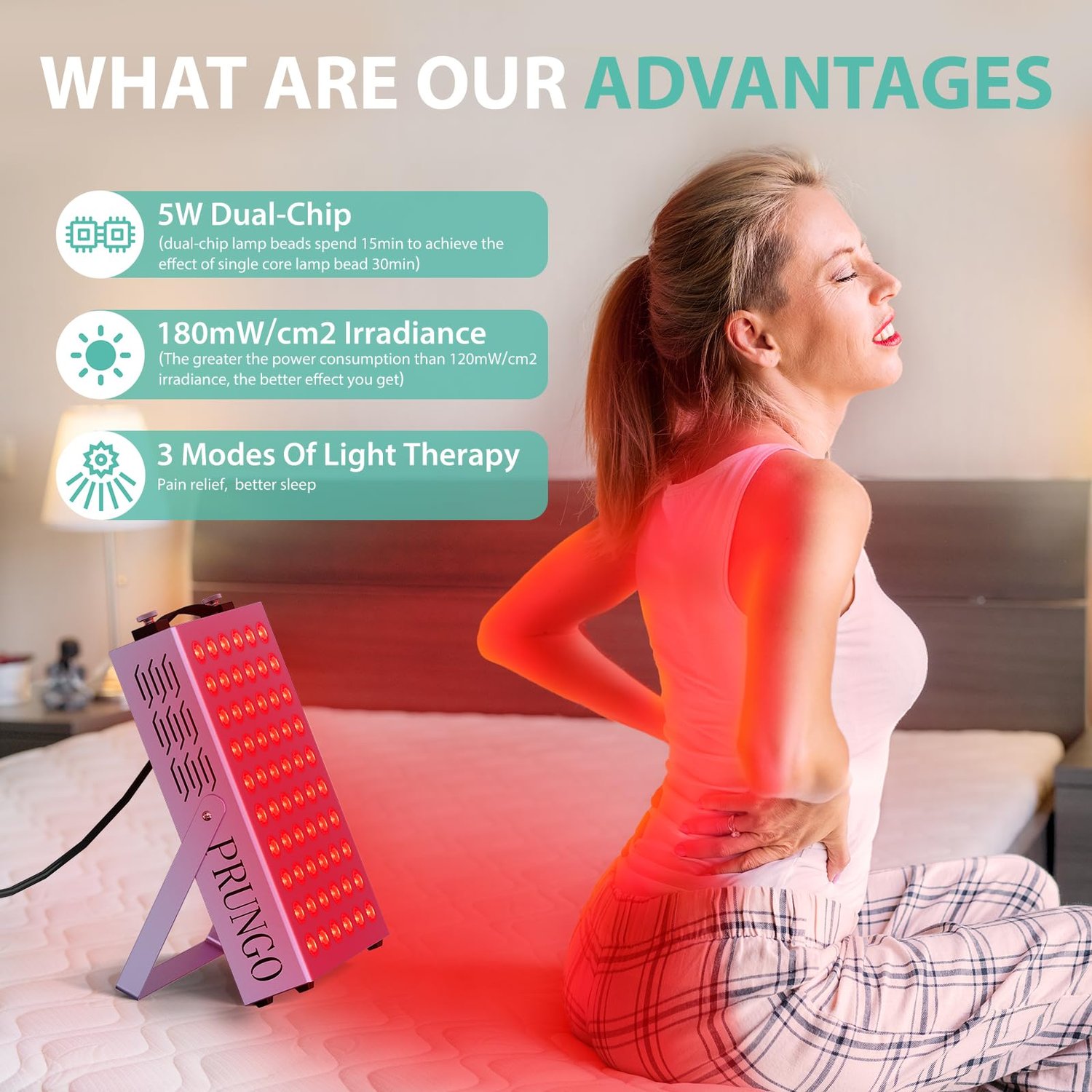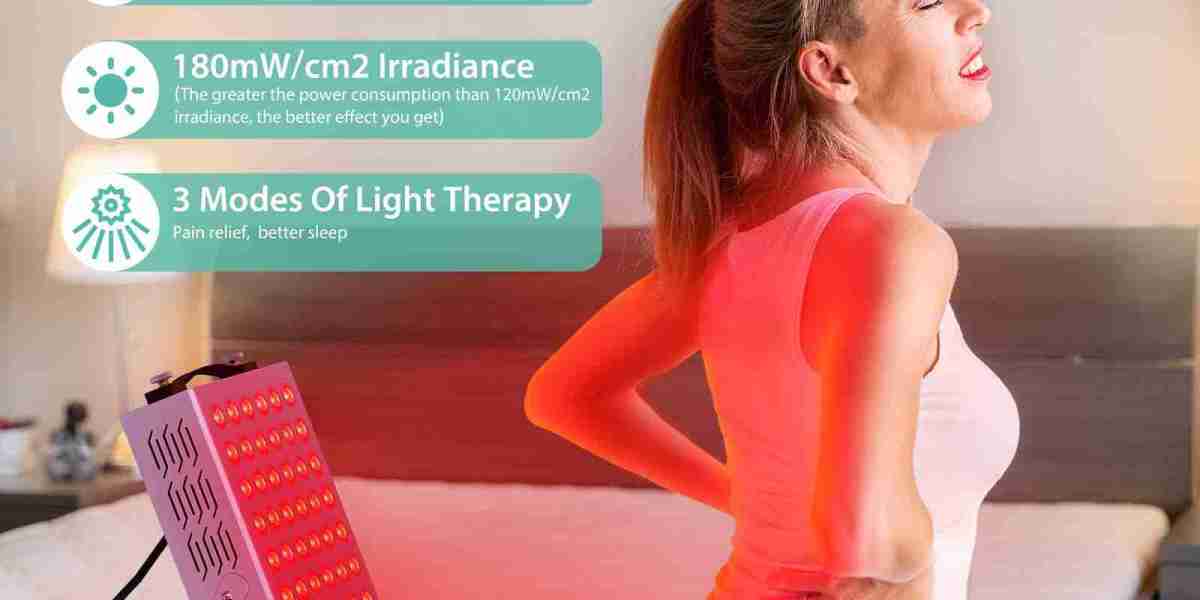Red light therapy (RLT) has emerged as a popular treatment option for various health and cosmetic concerns, including skin rejuvenation, pain relief, and improved healing. With a growing market of devices available for home use, it’s essential to know what to look for when shopping for red light therapy devices for sale to ensure you invest in a quality product that meets your needs. This article provides a comprehensive guide to help you navigate your options effectively.

Understanding Red Light Therapy
What is Red Light Therapy?
Red light therapy uses low-level wavelengths of red and near-infrared light to stimulate cellular function. This process, known as photobiomodulation, enhances ATP production in the mitochondria, leading to improved cell energy, reduced inflammation, and accelerated healing processes. RLT has gained recognition for its effectiveness in treating various conditions, such as acne, joint pain, hair loss, and signs of aging.
Benefits of Using RLT Devices
The potential benefits of red light therapy devices include:
Improved Skin Health: Reduces wrinkles, fine lines, and age spots while promoting collagen production.
Pain Relief: Alleviates discomfort from arthritis, muscle soreness, and injuries.
Enhanced Wound Healing: Accelerates recovery from cuts, burns, and other injuries.
Reduced Inflammation: Helps manage chronic inflammatory conditions.
Key Features to Consider
When shopping for red light therapy devices, several key features can influence the effectiveness and suitability of the product for your needs.
1. Wavelength Range
The wavelength of the light emitted by the device is crucial for its effectiveness. Look for devices that emit light within the following ranges:
Red Light: Typically between 600 and 660 nanometers (nm). This wavelength is ideal for skin treatments and surface-level issues.
Near-Infrared Light: Ranges from 800 to 850 nm. This wavelength penetrates deeper into tissues, making it beneficial for pain relief and muscle recovery.
2. Power Output
The power output, measured in milliwatts per square centimeter (mW/cm²), indicates how much light energy is delivered to the skin. Higher power outputs generally result in more effective treatments.
Low Power Output: Devices with lower power output may require longer treatment times to achieve desired results.
High Power Output: Devices with a higher output allow for shorter sessions while still being effective. Aim for devices that provide at least 50 mW/cm² for optimal results.
3. Treatment Area
Consider the size and design of the device based on the areas you plan to treat:
Handheld Devices: Great for targeting small areas, such as the face or localized pain spots. They are portable and easy to use.
Light Panels: Ideal for larger body areas and can provide full-body treatments. These panels can be mounted on walls or used in standing positions.
Wearable Devices: Convenient options for targeting specific areas, such as joints or muscles, allowing for mobility during treatment.
4. Treatment Time
The length of time required for effective treatment can vary by device. Some devices have shorter treatment times due to higher power outputs, while others may require longer sessions. Consider the following:
Session Duration: Most effective treatments range from 10 to 30 minutes. Check if the device allows you to set treatment time easily.
Automatic Timers: Some devices come with built-in timers that automatically shut off after the session, providing added convenience.
5. Safety Features
Safety is a significant consideration when using light therapy devices. Look for features that enhance safety during use:
Eye Protection: Ensure the device includes eye protection or use protective eyewear when necessary to prevent damage from direct light exposure.
Skin Contact Sensors: Some advanced devices feature sensors that ensure the device is in contact with the skin before emitting light.
Evaluating Brand Reputation and Customer Reviews
1. Brand Reputation
Research the brand and manufacturer of the red light therapy device. Established brands often provide better customer service, warranties, and product reliability. Look for brands with a history of positive feedback in the wellness industry.
2. Customer Reviews
Reading customer reviews can provide insight into the effectiveness and quality of the device. Pay attention to feedback on:
Results: Look for reviews that discuss the results users have experienced after using the device.
Ease of Use: Consider how user-friendly the device is and whether users encountered any issues during operation.
Durability: Check if customers have noted the longevity of the device and its components.
Price Considerations
1. Budgeting
Prices for red light therapy devices can vary widely, from affordable handheld models to more expensive professional-grade equipment. Set a budget that aligns with your needs, but be cautious of extremely low-priced devices, as they may lack the necessary specifications for effective treatment.
2. Value for Money
Consider the overall value for money by evaluating features, effectiveness, and warranty. A higher-priced device may offer better durability and performance, making it a worthwhile investment in the long run.
Conclusion
Shopping for a red light therapy device can be overwhelming, given the variety of options available. By understanding key features to look for—such as wavelength, power output, treatment area, safety features, and brand reputation—you can make an informed decision that aligns with your health and wellness goals. Investing in a quality RLT device can lead to significant improvements in skin health, pain relief, and overall well-being. Always consult with a healthcare professional if you have specific health concerns or conditions to ensure that red light therapy is appropriate for your needs.
WEBSITE. https://prungo.com



